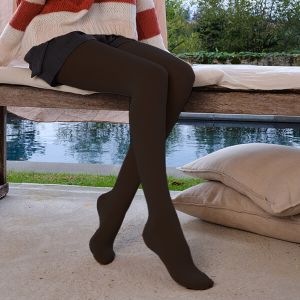Secrets of beautiful legs: care, exercise, edema prevention

Sedentary lifestyle, driving a car and improper diet have a negative effect on the health and appearance of legs. Swelling, feeling of heaviness, spider veins and varicose veins are everyday life of many women. Fortunately, there are several simple ways to enjoy well-groomed and beautiful legs for a long time. The key are proper care and movement.
Movement is the basis, or exercises to slim legs
Healthy appearance of legs provides primarily physical exercise. Effects visible to the naked eye can be achieved by riding a bike, both traditional and stationary. This type of activity not only shapes calves, but also helps in the fight against unnecessary fat around the thighs and buttocks. Roller skating, yoga, running and Pilates also have a beneficial effect on the appearance and condition of legs.
Slim and shapely legs are ensured by simple exercises that can be successfully performed at home. However, remember to warm up for a few minutes before each workout to avoid accidental injury.
Push-ups
One of the easiest and most popular exercises modeling legs. The key, however, is to perform them properly. Your feet should be shoulder-width apart, and your abdominal and gluteal muscles should be tight. When bending your knees, avoid leaning forward - your back should maintain a natural position. In a full and correct squat, the legs should take the shape of a right angle. At the beginning 10 repetitions in three series are enough - later the number of squats can be increased.
Leg raise
For this exercise, lie on your side and support yourself on a bent elbow. Then lift your leg with your toes pointing to the ceiling. The lift should be performed in two series of 10 repetitions.
Lunges to the side
Feet should be hip-width apart for this exercise. Remember to keep your glutes tense and your back in a natural position. The leg performing the lunge is bent, while the other leg is straight. It is best to perform the lunges 10 times for each leg.
No exercise will not bring results if it is not done regularly, so it is worth returning to them 3-4 times a week, and as your condition improves, increase their number.
Proper care for legs
The key to beautiful legs is not only physical activity, but also proper care. In addition to basic hygiene, you should also remember about regular exfoliation of dead skin, for example using sugar scrubs, pumice stones or special brushes.
Properly performed depilation also plays an important role. Hair should be removed in the direction of growth to prevent ingrown hairs and unsightly pustules. After the procedure, it is a good idea to apply a soothing and moisturizing balm, which will soothe the irritated skin and protect it from drying out.
Tired and sore legs will also bring relief to massages. For this purpose, you can use rollers, rollers, brushes or your own hands. Massage not only provides a pleasant sensual experience, but also relaxes tense muscles, improves blood circulation, calms and speeds up the process of cleansing the body of toxins.
The prevention of swelling is not without significance. Swelling of the legs may be a result of a sedentary lifestyle, but also indicate diseases of the urinary or circulatory system. If swelling is accompanied by a feeling of heavy legs, pain, problems with moving the limb, skin ulceration or its brown color, it may be necessary to consult a doctor.
Eliminating the underlying disease is key, and home remedies for swollen legs can be used as a complementary therapy. You can get relief by using horse chestnut gel, which has anti-inflammatory and anti-edema properties and also prevents blood clots. It is available without a prescription and its cost ranges from 10 to 20 zł.
Swelling of the legs may result from improper diet. It is worth including fruit and vegetables rich in potassium in your daily diet - this element supports water management of the body. Dried fruit (figs, apricots, raisins) as well as tomatoes, potatoes, celery and carrots are rich sources of potassium.
Water accumulation in tissues can result from dehydration, so drink at least 2 liters of low-sodium water throughout the day. Although salt in the diet is necessary, its excess can be harmful - it retains water in the body and thus increases pressure in the arteries. Therefore, you should not exceed a daily intake of 5g of salt.



















